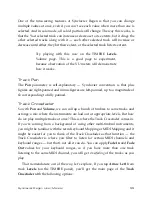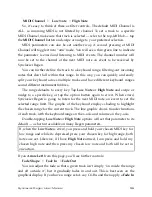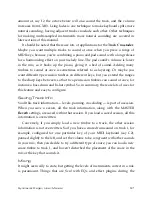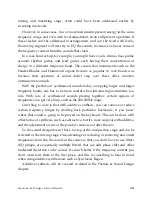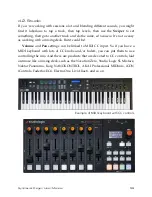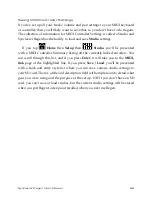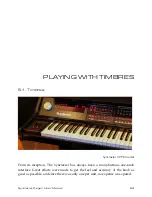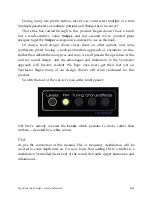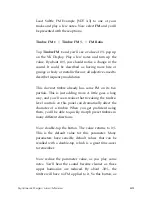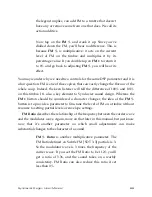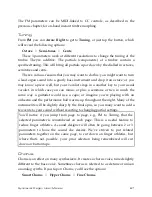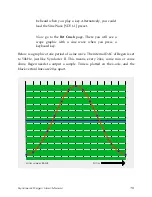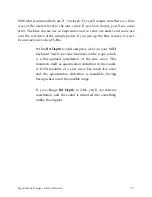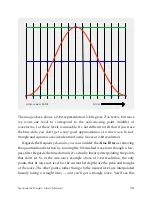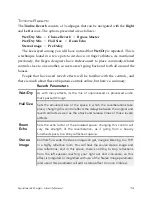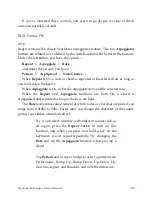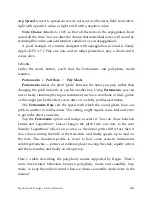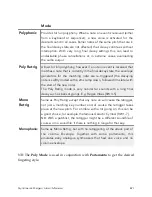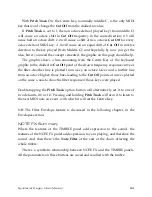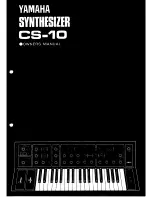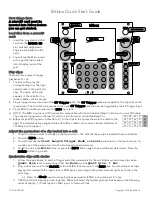
Synclavier Regen User Manual
68
Like
Tuning
, the three options are different resolutions on the same thing.
Smart Chorus is what you’ll want to use most of the time, as it follows a
logarithmic scale, so the amount relates to how us humans will perceive the
effect.
Hyper Chorus
runs rampant and
Fine Chorus
is for when you’re making
your final tweaks.
Call up Additive Percussion [SDT 2-8] timbre to a track.
This is a tuned percussion sound, which means that
different keyboard keys will trigger different pitches, so
the composer can find the right tuning of Clave for their
composition. Play a few notes to witness this.
Then dial up the
Smart Chorus
to around 5%. You’ll
notice the sound has thickened up a bit. Keep increasing
it and you find when you get to about 20% it starts to
sound like 2 distinct sounds instead of one, and by
about 35%, this distinction is obvious.
You’ll also see the two vertical note lines, and the
chorus voice will stretch out further to the right as you
increase the chorus amount. Double tap
Smart Chorus
to return to 0%. You can also reduce chorus to a minus
value and the chorus voice stretches out to the left. NB:
When using negative chorus you change the
fundamental frequency of the timbre, therefore the
perceived tuning, in a way that positive chorus does
not.
On the Chorus page, the main display provides a Combined Values pane, which
shows the chorus as a ratio, semitone difference, and cents difference. You may
be used to valuing chorus by one of these method, so all are provided. NB: A


